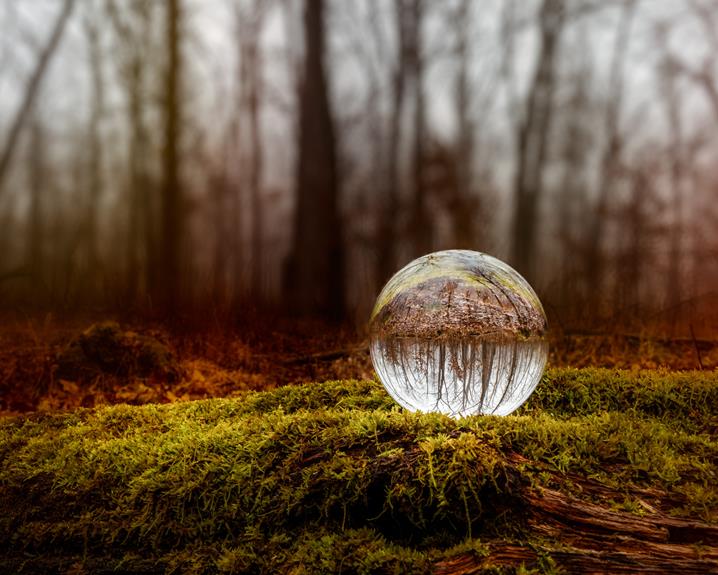If your moss ball is looking as lifeless as a deflated balloon, you may be wondering how to breathe new life into it. Understanding the telltale signs of a struggling moss ball is the first step towards its rejuvenation.
But what if there's more to saving this aquatic plant than meets the eye? Stay tuned to uncover practical strategies and expert advice on reviving your moss ball and ensuring its longevity in your aquarium.
Key Takeaways
- Remove dead moss ball carefully to prevent disintegration and odor.
- Watch for color changes like brown or black indicating decay.
- Implement proper cleaning, water changes, and algae control for moss ball health.
- Create a suitable environment with proper lighting and tankmates for thriving moss balls.
Recognizing Signs of Dead Moss Balls
Recognizing signs of a dead moss ball in your aquarium can be crucial in determining the health of your aquatic plant. A dead moss ball may fall apart when you remove it from the tank, appearing less vibrant and emitting a strong, unpleasant odor. When taking it out, you might notice disintegration, indicating the need for moss ball preservation or restoration.
Assessing the vitality of your moss ball is essential to its well-being. Remember, with proper care, moss balls are resilient and challenging to kill. Regularly monitor your moss ball's condition to ensure it stays healthy and vibrant in your aquarium.
Understanding Color Changes and Decay
Understanding the color changes and decay of your moss ball aquarium plant is essential for maintaining its health and vibrancy in your tank.
- Identifying decay stages:
- Turning brown: Indicates the beginning stages of decay.
- Turning black: Signifies internal degradation, requiring prompt treatment.
- Turning white: Caused by excessive sunlight exposure, necessitating relocation.
- Preventing color changes:
- Brown patches: Result from a lack of sunlight, requiring occasional rapid washing.
- Black color: Indicates internal deterioration, with rescue possible through timely action.
Addressing Slimy White Spots Issue
To address the issue of slimy white spots on your moss ball aquarium plant, it is crucial to implement consistent weekly or biweekly tank cleaning to maintain a healthy environment. These spots are indicative of an algae attack, which can be harmful if not addressed promptly. Here is a helpful table to guide you on addressing this problem:
| Issue | Solution |
|---|---|
| Slimy white spots | Implement salt treatment for algae control |
Moss Ball Care Tips and Tricks
Regularly maintaining your moss ball aquarium plant is essential for its longevity and health. Here are some care tips to ensure your moss ball thrives:
- Moss Ball Aesthetics: Keep your moss ball looking lush and vibrant by gently rolling it in your hands to maintain its round shape.
- Moss Ball Placement: Choose suitable tankmates that won't disturb or consume the moss ball, as some fish species may see it as a snack.
- Regular Cleaning: Wash the moss ball with clean water regularly to prevent the buildup of algae and debris, helping to maintain its health and appearance.
Importance of Suitable Environment
Ensure the longevity and health of your moss ball aquarium plant by creating a suitable habitat that supports its growth and well-being. Moss balls thrive in low to moderate lighting conditions, so keep them away from intense sunlight to prevent stress and discoloration.
Additionally, consider the companionship of fish species that won't disturb or consume the moss ball. A suitable environment for your moss ball also includes regular water changes every two weeks to maintain water quality and freshness.
Proper Water Maintenance Techniques
Maintain the health and vitality of your moss ball aquarium plant by implementing effective water maintenance techniques that support its growth and longevity.
- Monitor Water Quality: Regularly test the water parameters such as pH, ammonia, nitrites, and nitrates to ensure they're within the appropriate range for moss ball health.
- Prevent Algae Growth: Control the amount of light your aquarium receives, consider using an algae inhibitor, and avoid overfeeding your fish to minimize algae growth, which can negatively impact your moss ball.
- Regular Water Changes: Ensure you change a portion of the water in your aquarium every two weeks to maintain optimal water quality for your moss ball's well-being.
Effective Moss Ball Cleaning Methods
To keep your moss ball aquarium plant healthy and vibrant, adopt effective cleaning methods that will ensure its longevity and vitality. Regularly inspect your moss ball for any signs of algae growth. If you notice slimy white spots, it's crucial to act promptly to prevent further damage.
Consider using moss ball revival techniques such as gently washing the ball with clean water or submerging it to remove hidden particles. To prevent algae from taking over, implement moss ball algae prevention methods like weekly or biweekly tank cleaning.
Moss Ball Health FAQs
Inspecting your moss ball regularly for signs of algae growth is essential to maintaining its health and longevity, especially when addressing common concerns through Moss Ball Health FAQs.
- How to revive moss balls
- Brush off algae gently
- Consider salt treatment
- Thorough washing can help revive sick plants
- Common misconceptions
- Moss Ball turning grey doesn't always mean it's dying; it may just need cleaning
- Unhealthy appearances (white, brown, black) can be revived with proper care
- The lifespan of a Moss Ball is at least 200 years, so they're resilient
Frequently Asked Questions
Can Dead Moss Balls Be Composted or Recycled in Any Way?
If your moss balls have perished, you can recycle them by composting. This benefits the environment by returning nutrients to the soil. Consider shredding them to speed up decomposition. Recycling options include using them as organic matter in your compost bin.
Are There Any Natural Predators or Organisms That Can Help Revive a Dead Moss Ball?
You won't believe it, but there aren't any natural predators or organisms that can magically revive a dead moss ball. Proper care, like water changes, gentle cleaning, and avoiding intense light, is the key!
Is There a Specific Ph Level or Water Temperature That Moss Balls Thrive In?
In maintaining your moss balls, ensure water pH stays between 6.5-7.5 and temperatures range 72-78°F for optimal growth. Monitor these water parameters closely for healthy aquatic plants. Proper care is key for thriving moss balls.
Can Moss Balls Be Propagated or Grown From Seeds?
You cannot sow moss ball seeds like a gardener with flowers. Moss balls propagate a different way. Care for them well, and they may split into smaller versions. Remember, nurture and patience lead to growth.
Are There Any DIY Methods or Homemade Solutions to Treat a Dead Moss Ball Before It Completely Deteriorates?
If your moss ball's showing signs of decline, try DIY treatments before it's too late. Revive it with gentle cleaning, salt treatment, and proper care to bring back its lush green color and health.
Conclusion
Congratulations! By following the tips and tricks outlined in this guide, you have officially become a moss ball whisperer.
You have mastered the art of rescuing and reviving your beloved aquatic plant from the brink of death.
With your newfound knowledge and skills, your moss ball will thrive in its environment, showcasing vibrant green hues and optimal health.
Keep up the great work and continue creating a healthy and beautiful aquatic habitat for your moss ball to flourish in!





